
What Carney’s win means for environment and climate issues in Canada
Mark Carney and the Liberals have won the 2025 election. Here’s what that means for...
On a dreary gray day in late October, passers by gawked at a scene outside a hotel in Smithers, B.C. The charred remnants of several trucks sat in the parking lot in the wake of what police described as a “targeted attack” in the pre-dawn hours of the morning.
Among the blackened wreckage were four police cruisers — marked and unmarked vehicles with the RCMP’s Community-Industry Response Group, a special task force assigned to police opposition to industrial projects. The controversial RCMP unit maintains a constant presence on Wet’suwet’en yintah (territory) where Coastal GasLink (CGL) is building a pipeline without the consent of the nation’s Hereditary Chiefs.
Federal fisheries officers later exchanged emails about the incident.
“Wanted to make sure you are aware of this as it appears to be related to CGL,” fisheries protection biologist Ian Bergsma wrote to his superiors in an email obtained by The Narwhal through freedom of information legislation. “Given the previous vandalism attack at the CGL crossing site we should have a discussion about safety protocols for … monitoring of CGL crossings that [are] planned for this winter.”
Vincent Harper, section head with Fisheries and Oceans Canada’s habitat protection program, replied the following day.
“Discussed this with Brenda today,” Harper wrote, referring to another manager at the federal department. “We both agree that we should avoid monitoring in this area while these types of activities are still occurring.”
The newly released emails are the first indication that federal enforcement officers were using vandalism as an excuse not to do required monitoring and inspections. Ironically, the emails also indicate federal officials were concerned they were not doing enough monitoring during a period when the company reported an “abnormal amount” of fish deaths during ongoing construction.
Fisheries and Oceans Canada, commonly called DFO, confirmed in a statement to The Narwhal that it could be scaling back some monitoring of the 670 kilometre project due to safety concerns, but it declined to provide details.
“We schedule monitoring site visits taking into account risks to staff safety and attend sites when conditions are deemed safe,” a spokesperson wrote in an email. “Civil protests, reports of violent activities and inclement weather for travel are all factors that DFO considers when assessing field work safety for staff.”
The RCMP has not made any arrests related to the fire, which damaged or destroyed 15 vehicles, nor linked it to the pipeline project — around 100 kilometres from Smithers. The attack Bergsma mentioned seemed to reference an incident one year ago, when unknown assailants chased off pipeline security workers and allegedly damaged equipment at a worksite where the company is crossing Wedzin Kwa (Morice River).
Corporal Madonna Saunderson, with the RCMP’s communications service, said investigations are ongoing but did not answer questions about the incidents or provide updates.
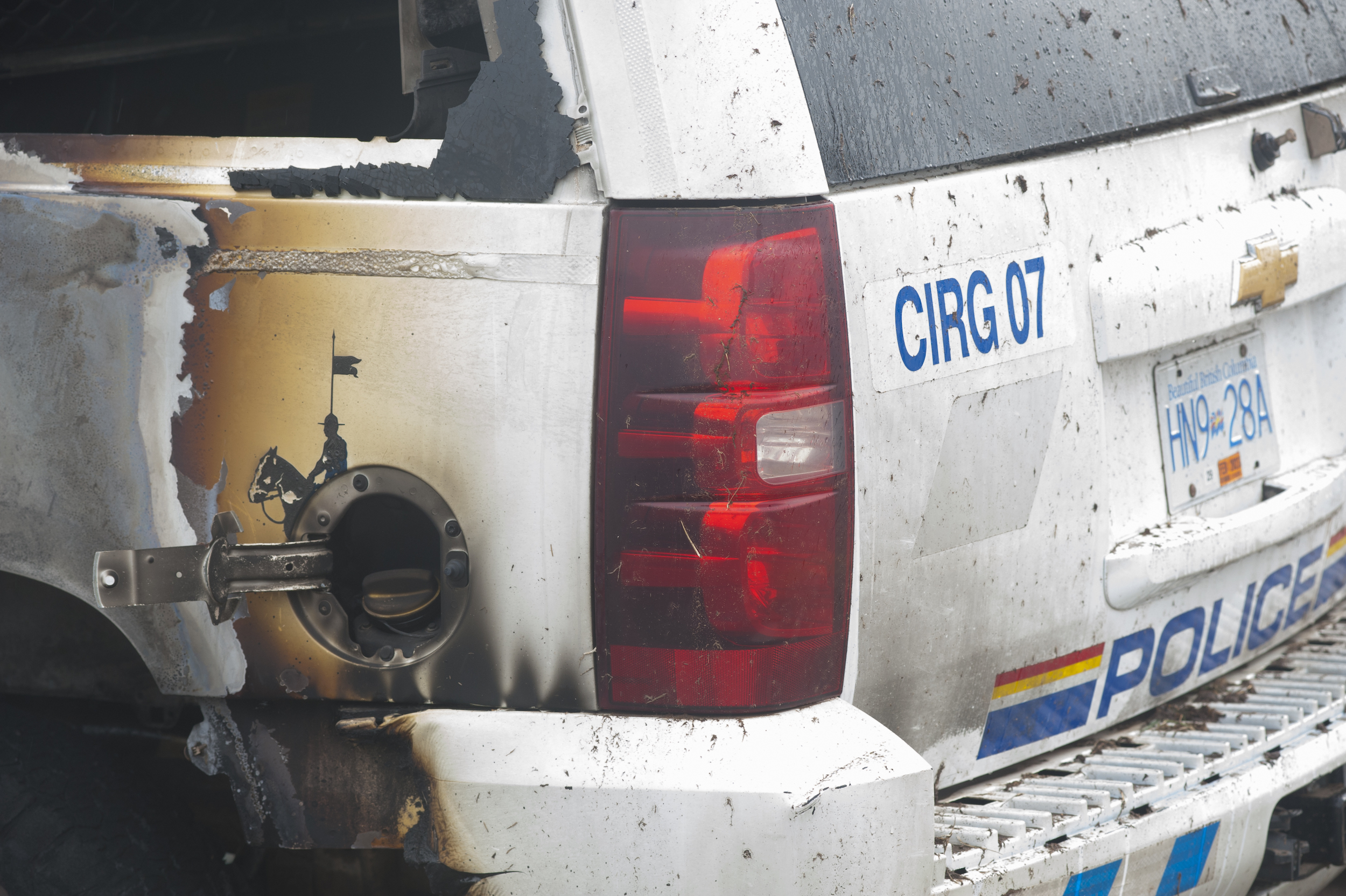
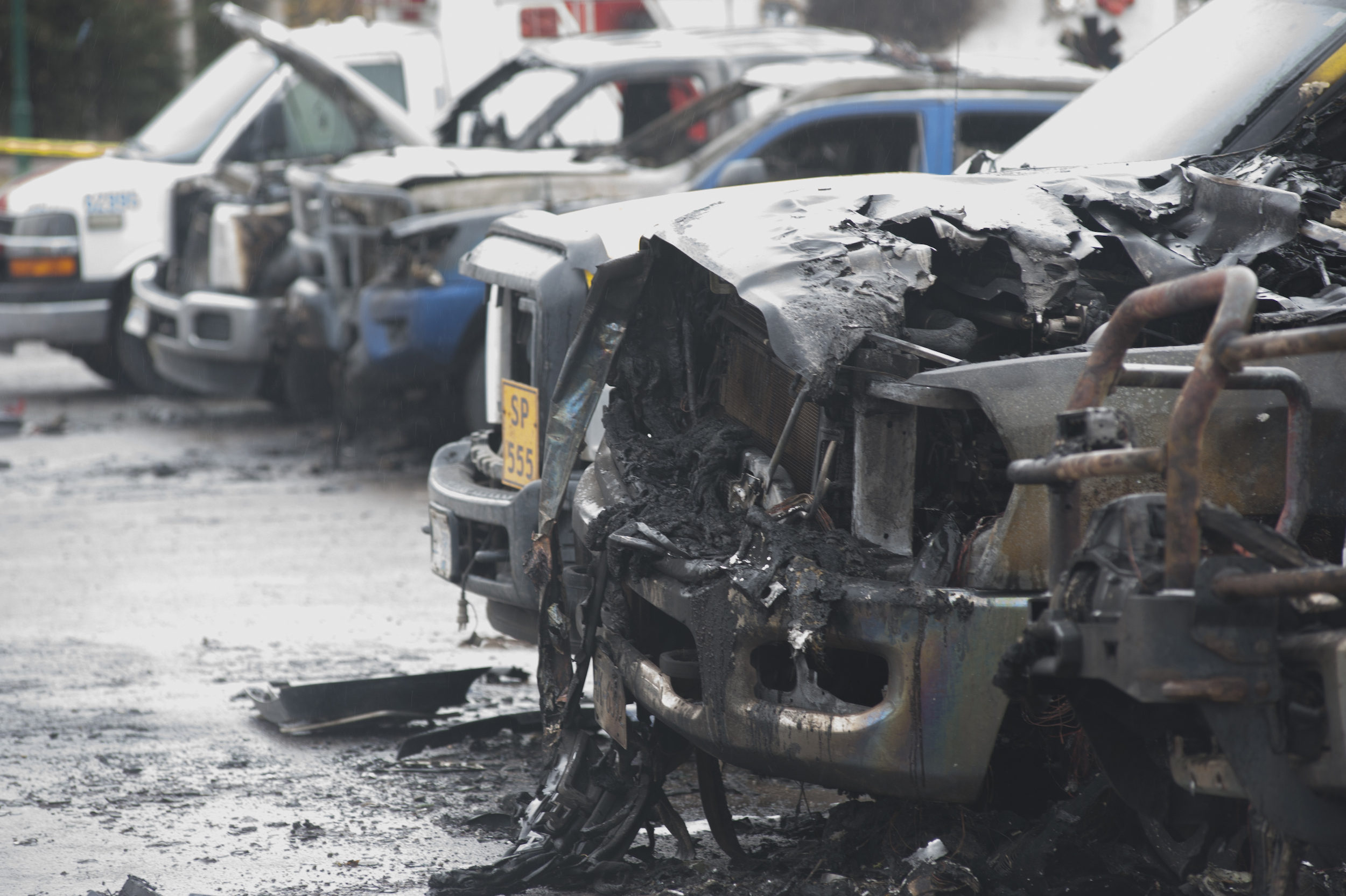
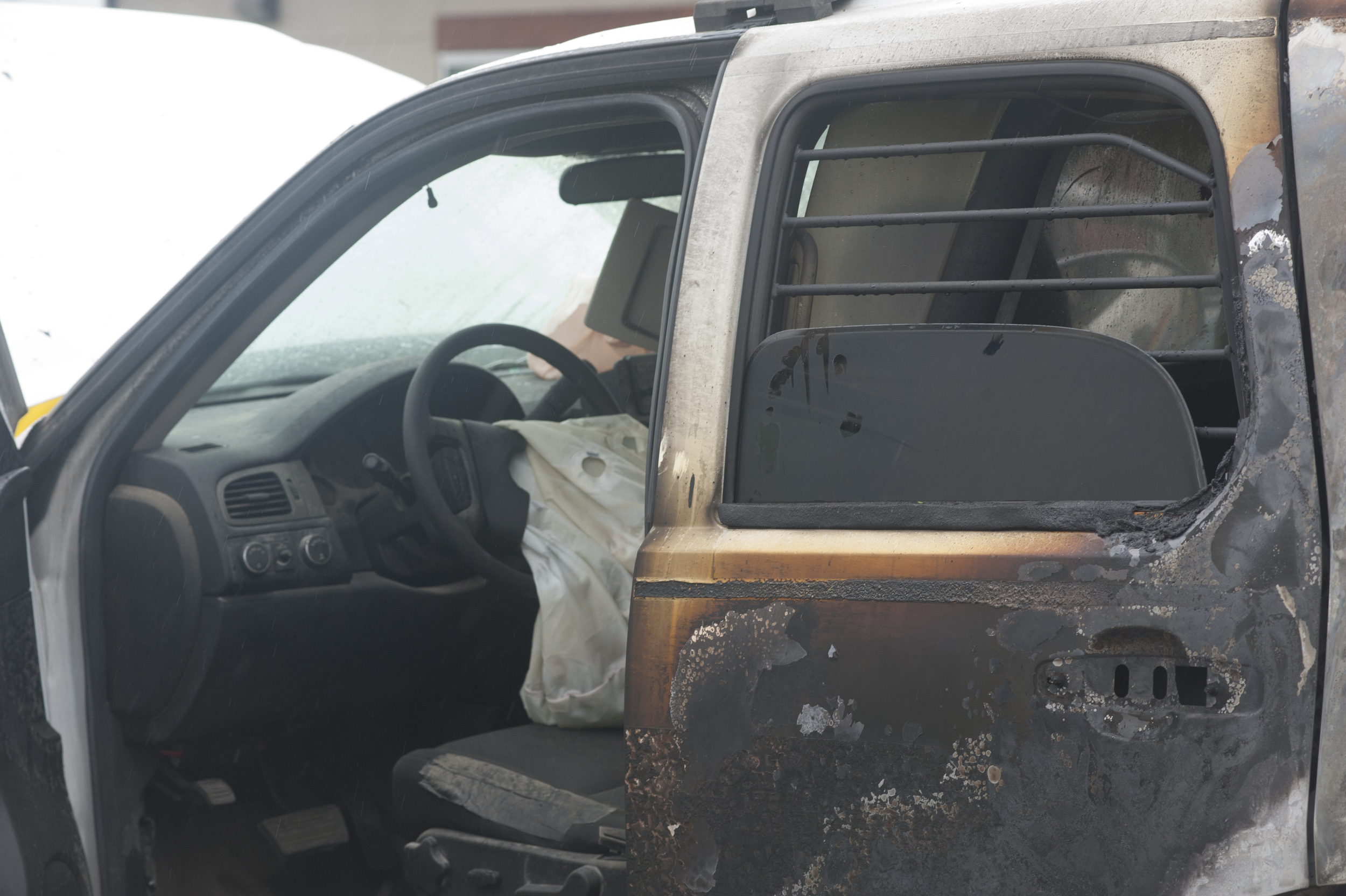
Aaron Hill, executive director of Watershed Watch Salmon Society, said even if the federal department’s fears were founded, that shouldn’t prevent fisheries officers from fieldwork.
“We’re talking about an agency that deals in high-risk environments all the time,” he told The Narwhal, noting Fisheries and Oceans Canada trains its officers to use firearms and deal with confrontational situations. “They board pirate fishing vessels on the high seas — with guns. If it is as high-risk as they think it is, that’s something they’re equipped to deal with so that’s not an excuse to abandon monitoring.”
Since Coastal GasLink construction began in 2019, land defenders trying to stop the pipeline have repeatedly come into conflict with police and the pipeline’s private security force. The RCMP has conducted three major raids of the territory, deploying heavily armed tactical units and authorizing lethal overwatch — police lingo for granting its members permission to shoot to kill. To date, the force has made more than 90 arrests and dozens of detentions, running up a taxpayer tab of more than $25 million. While tensions remain high on the yintah, Hereditary Chief Na’moks said what happened in Smithers was not directed by the chiefs.
“We would never condone, nor would we do such actions,” he told The Narwhal in an interview.
When asked if he thinks there’s any validity to fisheries officers’ concerns about safety, he didn’t hesitate.
“None whatsoever. We want them out there. We’ve never instigated any form of violence. We’re the people that are trying to protect the water and the salmon. We would never stand in the way of proper monitoring.”
Sleydo’ Molly Wickham, a Wet’suwet’en wing chief who was arrested at gunpoint in 2021 during a now-infamous RCMP raid, said land defenders would welcome fisheries officers.
“There are no safety concerns whatsoever for them to do their job. Honestly, if we saw a DFO truck drive out on the yintah, we’d probably all cheer.”
Sleydo’ said the decision to avoid monitoring reflects a systemic issue.
“The federal government has been absent from most of their responsibilities this whole time, because they say that it’s provincial jurisdiction,” she said in an interview, noting it was news to her that DFO is even involved in the project. “I think that it’s a cop-out from doing their actual jobs — it’s their job to protect fish and fish habitat.”
The federal agency argued its role is less prominent because it did not issue any permits and noted provincial regulators take the lead on field inspections.
“DFO has compliance monitoring targets depending on risks to fish and fish habitat and whether a regulatory approval was issued for a project,” the spokesperson explained. “For example, where Fisheries Act authorizations are issued, staff monitor sites more frequently during construction and again after construction to ensure that conditions of the approval were followed. For the CGL project, DFO did not issue any regulatory approvals and thus conducts monitoring of the various crossing sites consistent with other lower risk projects.”
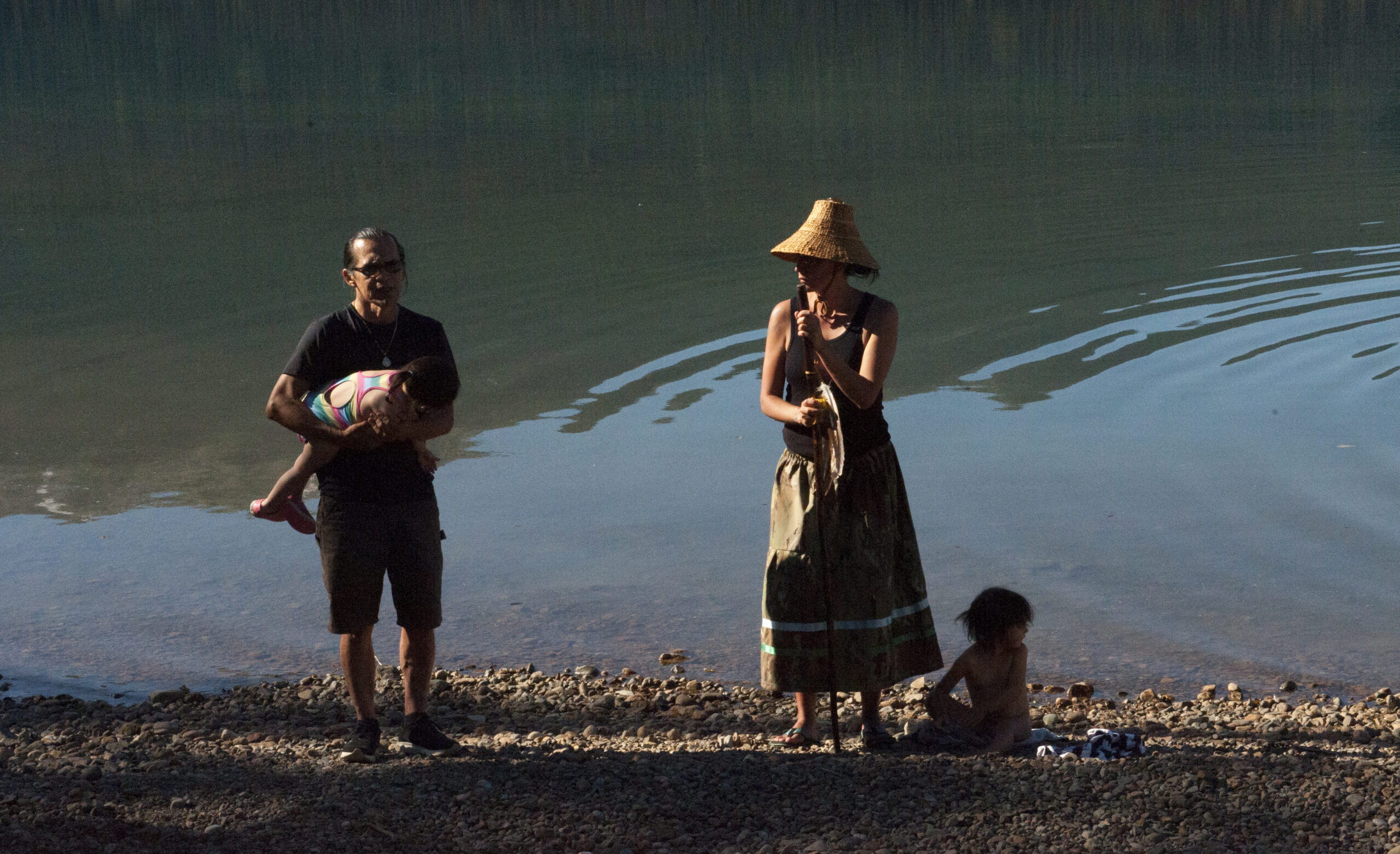
Coastal GasLink has repeatedly failed to adhere to environmental regulations and received more than $450,000 in fines issued by the B.C. Environmental Assessment Office for violations. Many of the violations are related to sediment entering wetlands, lakes, creeks and rivers — too much of which suffocates fish.
The newly released records reveal the federal fisheries agency decided to stop monitoring on Wet’suwet’en territory at a critical time.
Days after Fisheries and Oceans Canada officials agreed to avoid areas of contention, Bergsma received an email that flagged reports filed by the pipeline company.
“Not sure if you see these mortality reports from CGL or not?” Jason Davey, a fishery officer with the department, wrote. “I have received seven mortality notifications, such as the one below, in the last 11 days. The total number of mortalities reported is now at 31. This is an abnormal amount of mortality notifications for the CGL project.”
The dead fish in question were longnose dace, a freshwater minnow that provides a food source for birds and other fish, including salmon.
The fishery officer asked Bergsma for his opinion on “what point should a field inspection be conducted to ensure proper methods are being utilized” to minimize mortalities. The two sites identified in the documents were Owen Creek, a tributary of Wedzin Kwa (Morice River) near a Gidimt’en clan village site, and an unnamed tributary of Lho Kwa (Clore River).
Forwarding the email to his superiors, Bergsma noted he would bring the issue up with a contact at Coastal GasLink.
The department told The Narwhal it was unable to provide additional mortality reports and said the company made a “minor fix” that resolved the problem. It is unclear whether any additional field inspections of the sites took place.
Concerned about potential impacts to salmon and other species and lack of government oversight, Wet’suwet’en chiefs, fish and wildlife monitors and their supporters have tried to keep an eye on construction of the pipeline on numerous occasions. But private security forces employed by Coastal GasLink continue to restrict access to areas like the crossing of Wedzin Kwa.
In early November, Wet’suwet’en chiefs and their supporters were told they would be arrested if they tried to access a Coastal GasLink worksite.
“Coastal GasLink has an obligation to control access to its worksites to ensure the safety of both the public and its workers which includes restricting access to existing roads, trails and travel ways at active work areas,” TC Energy, the project’s parent company, told The Narwhal in a previous statement. “Safe access for community members is facilitated through a defined process that has been communicated to the Office of the Wet’suwet’en, Hereditary Chiefs, elected Wet’suwet’en leadership and house members.”
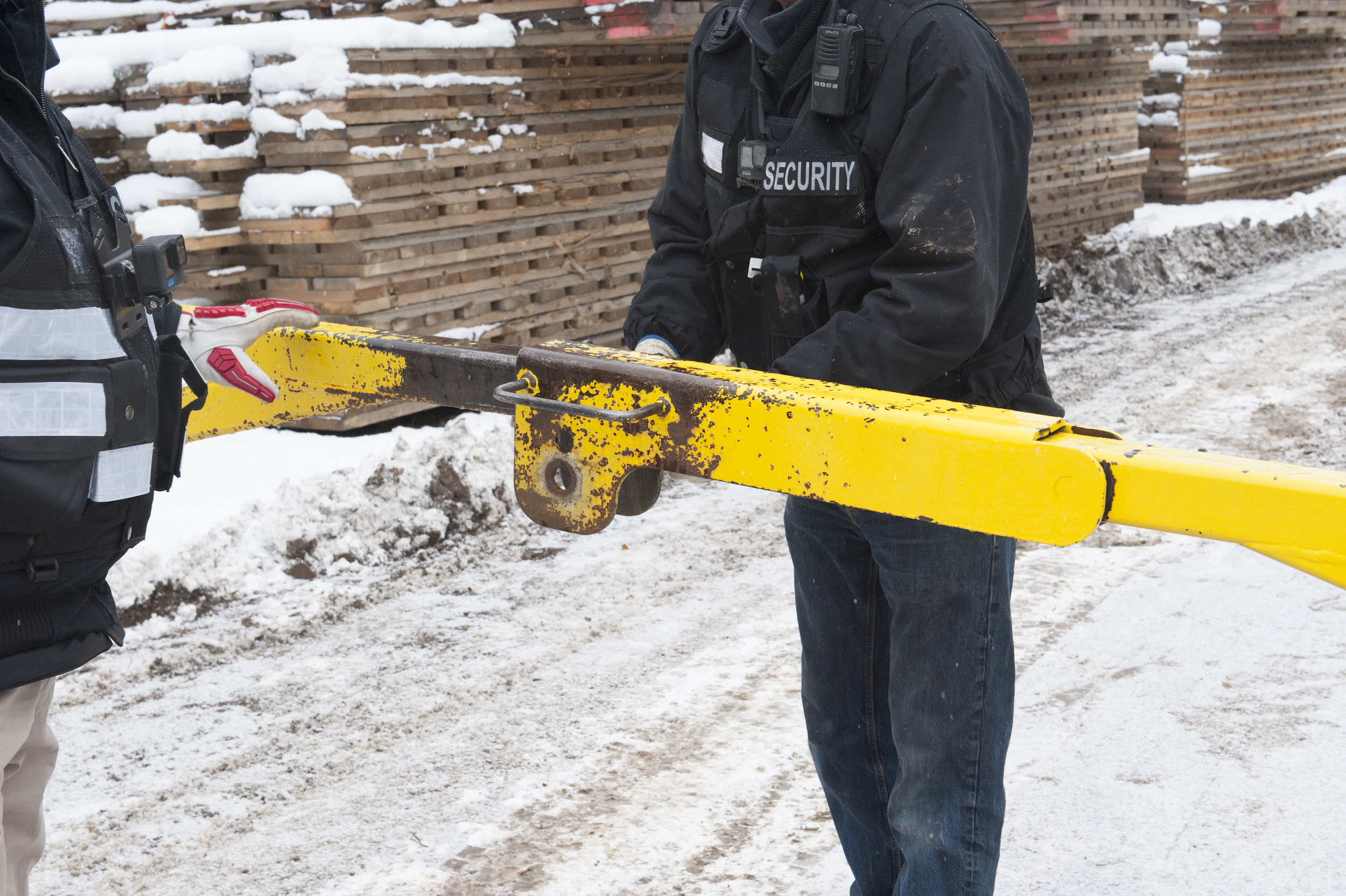
Around the same time, Bergsma told one of his managers, Brenda Rotinsky, the situation “sounds pretty tense up there” in an instant message.
“There is no expectation that we would put ourselves in that situation,” Rotinsky replied, adding: “We are hanging back from the more tense locations, right?”
Bergsma told her they were and suggested he’d ask Coastal GasLink representatives to submit progress updates “so that at least we can keep in the loop somewhat.”
Hill called this an “egregious failure” of the federal department’s responsibility.
“Anybody who works in this field knows that industry self-monitoring doesn’t work without strict government oversight,” he said.
Shannon McPhail, co-founder of Skeena Watershed Conservation Coalition, agreed and said the government should issue a stop-work order.
“They need to prove to us that they can get their shit together and actually do this right,” she said. “If you’re gonna force a project down the throats of Wet’suwet’en people violently against their will, then you better be ready to make sure that every single crossing site for salmon is being done right and not rely on an industry that clearly has a habit of destroying or harming fish habitat to be the ones to report on themselves.”
On Feb. 1, TC Energy announced a revised cost estimate of $14.5 billion — more than double what the company originally thought the pipeline would cost. Already behind schedule, project personnel are likely facing pressure to get the pipe in the ground as quickly as possible. This could be causing an increase in persistent problems with environmental protection.
In early January, the company allegedly conducted work directly in a salmon river without installing any sediment control measures. Fearing they would be denied access to the remote site if they approached on the backroads, Wet’suwet’en chiefs flew over the Lho Kwa crossing to document from above. After receiving concerns about the potential infraction, the federal agency launched an investigation.
“DFO performed a site inspection and is currently assessing the data to determine compliance with the Fisheries Act,” the spokesperson wrote. “We continue to receive ongoing updates from both CGL and the environmental monitors on site.”
On Jan. 29, Wet’suwet’en chiefs flew over the site a second time to document what appeared to be breaches of the company’s water isolation measures — dams put in place that dry out the section where a trench is dug to install the pipeline under the river. According to reports and photos, those measures failed and icy water spilled into the worksite, flooding equipment and sending more sediment into the river system.
“Coastal GasLink has lost control of this river crossing, and our fish are paying the price,” Tsebasa, a Likhts’amisyu clan chief, said in a statement.
TC Energy disputed the report.
“To manage the rise in water levels due to higher temperatures last week, we initiated a temporary overflow of our barrier at the Clore River yesterday,” the company wrote in a Jan. 30 statement.
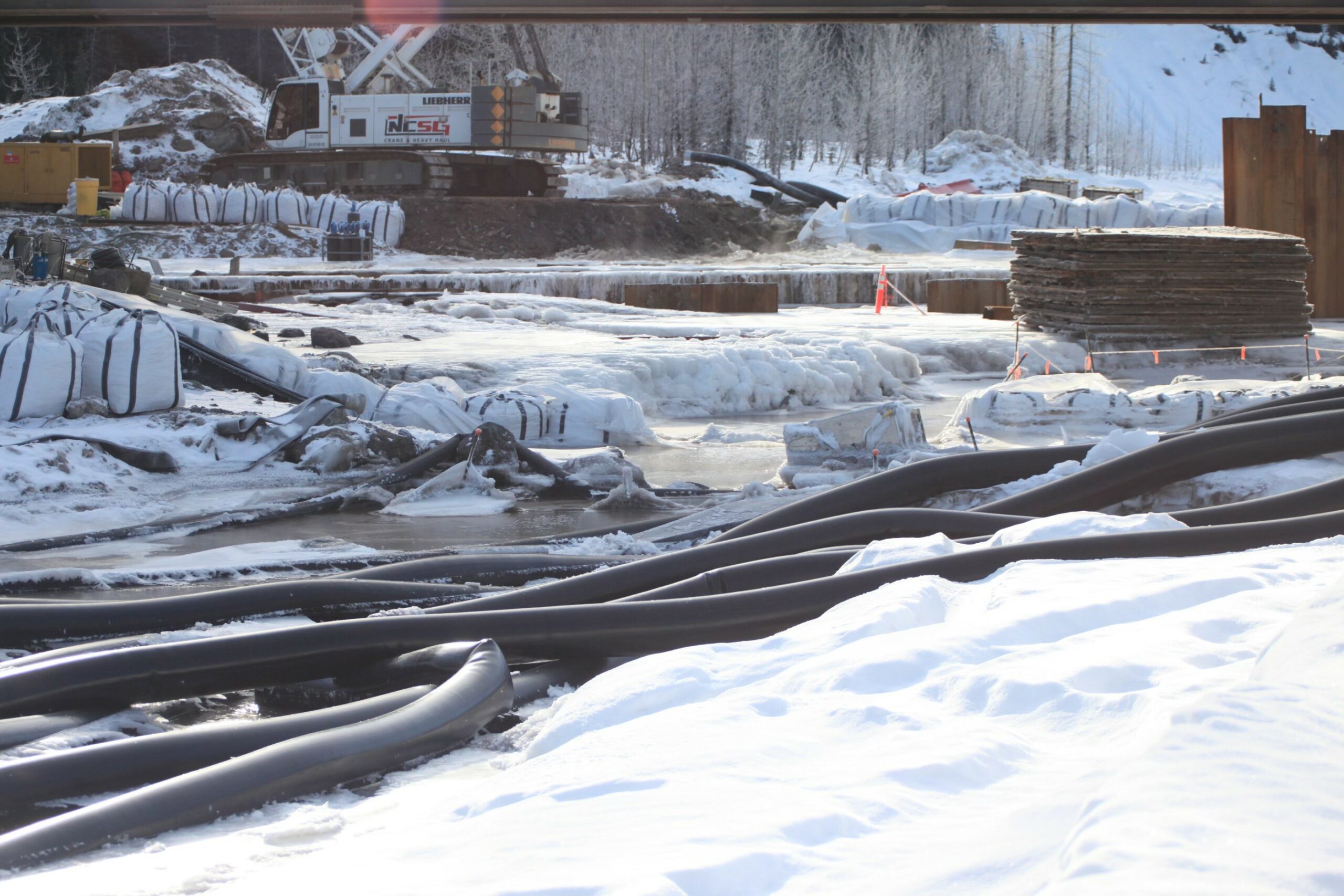
For Tsebasa, the onus is on government regulators to prove no damage to fish habitat is occurring — and make the company stop working until that proof is given.
“Ultimately, I wish they would just pack up and leave,” she said. “But with the current and ongoing damage from Coastal GasLink continuously breaking the law, we are asking for a stop-work order until we, the Hereditary Chiefs, can meet with B.C. and federal regulators to ensure there are people and plans in place to uphold the law. To do anything else would be negligent.”
Sonia Furstenau, leader of the BC Greens, said the volume of infractions is grounds for the provincial government to step in and stop the project.
“This company has repeatedly failed to meet the requirements of its permits, which has caused damage to the river, wetlands and salmon habitat,” she said in a statement. “This government needs to send a clear message. Industry cannot continue to flaunt our laws and regulations and be allowed to operate.”
Given the absence of publicly-available data, it’s unclear how much habitat is impacted at the Lho Kwa crossing and on other sections of the pipeline.
“Our fish can’t take it,” McPhail said. “We’re at the point now where in some runs every fish matters. If we lose the fish, we lose everything.”
Get the inside scoop on The Narwhal’s environment and climate reporting by signing up for our free newsletter. When I visited my reserve, Moose Factory,...
Continue reading
Mark Carney and the Liberals have won the 2025 election. Here’s what that means for...

An invasive pest threatens the survival of black ash trees — and the Mohawk art...

Xatśūll First Nation is challenging B.C.’s approval of Mount Polley mine’s tailings dam raising. Indigenous...

